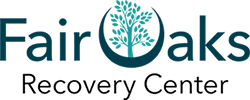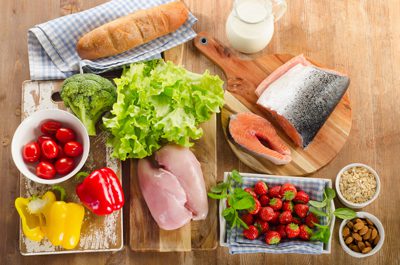When given the choice between apple slices and peanut butter or a gooey caramel chocolate bar, most of us will end up with chocolate on our fingertips.
Making Healthier Choices
Our taste buds may be satisfied with this choice, but we haven’t properly served our minds and bodies.
Whole foods are fundamental building blocks for anyone in recovery. A well-fueled body helps offset cravings, mood swings, and low energy.
Nutrients Lost Through Substance Abuse
Choosing the best foods for a sustainable recovery is more than just adding steamed broccoli as a side to a roasted chicken breast with rice—although that’s a good start! It’s important to enable your body to purge toxins and create a system that operates efficiently in all capacities, from proper brain function to cell regeneration.
In addition, if someone is addicted to drugs or alcohol, it’s likely he or she also has poor nutrition, even to the point of malnutrition. As a result, the body is depleted of essential vitamins and minerals, including but not limited to:
- Vitamin A: Helps visual and cellular development
- B vitamins: This series of eight vitamins is responsible for supporting everything from the nervous system and proper hormone production to fighting infection and reducing the effects of autoimmune disorders
- Calcium: Necessary for building critical bone mass and maintaining healthy teeth
- Fiber: Helps feed “good” digestive bacteria and regulate blood sugar levels
- Vitamin D: Difficult to absorb through food alone, vitamin D is critical for proper immune system function and possibly offsetting depression
- Vitamin E: An important antioxidant, it fights cell damage
- Magnesium: A vital nutrient for producing energy that also helps the heart, arteries, and muscles operate well
- Potassium: Required for healthy circulation and blood pressure
- Zinc: This trace element supports the immune system and improves wound healing, and heightens the senses, especially smell and taste
Whole foods provide your body with vitamins and nutrients it may be lacking to jumpstart its natural healing abilities. No matter how chewy delicious a cheesy deep-dish sausage and pepperoni pizza may be, it’s simply not going to have what you need to curb cravings and establish a heathy body post-recovery.
Whole foods are low in sugar, artificial sweeteners, salt, and preservative chemicals, and aren’t fried, processed, or manufactured on a fast-food assembly line. Whole foods also help regulate spikes in blood sugar: a crucial component to reducing mood swings, depression, and anxiety.
Here are the top five whole foods that help with recovery:
Colorful Vegetables and Fruits
There’s a rainbow of nutrition waiting for you beyond frozen corn and green beans! From raw orange bell pepper slices to roasted Honey Crisp apples, from dark red cherries to, yes, vibrant green steamed broccoli, simply eating three ½ cup servings of vegetables and a whole piece of fruit a day makes a dramatic difference in how you feel and how your body functions.
Leafy Greens
Why do greens have a separate category? Because they’re enriched with a variety of vitamins and minerals. Think spinach, Swiss Chard, kale, collard greens, watercress, arugula, and lettuces such as Romaine, red leaf, or butter. Iceberg lettuce is mostly water and has little nutritional value.
Whole Grains/Complex Carbohydrates
Enjoying brown rice or quinoa instead of plain white rice or white potatoes lowers the risk of diabetes and supplies your body with phytochemical compounds that improve health. Dark-skinned potatoes still have a high nutritional value and can be enjoyed occasionally as long as you eat the skin, as most of the nutrients are there. Switch out white flour products for whole-wheat flour varieties, and use complex carbohydrates for natural energy.
Lean Protein
Lean protein options such as fish, chicken, or turkey are better for daily eating, especially when sustainably-sourced. A grass-fed beef steak may be a wonderful treat every so often. You may also get a nice protein boost from nuts such as pistachios or almonds, and plant-based sources such as soy or beans.
Good Fat
A healthy diet needs good fat to bind with certain nutrients and provide vital Omega fatty acids that help with tissue repair. Many whole foods have good fat, compared to processed foods with saturated and trans fats. Avocados, eggs, certain types of cheese and nuts, fish, and even a piece of dark chocolate now and again round out your healthy eating plan.
Finally, focus on essential hydration by drinking a variety of beverages each day, such as lemon/lime water, coconut water, and green, white, and herbal teas.
Take Control With a Meal Plan
For some people, using the term “diet” is associated with sacrifice, shouldn’t haves, and reproach. If you’re in recovery, the last thing you may want is to feel there’s something else you have to avoid.
To establish a more positive mindset, make a plan. A healthy meal plan allows you to have total control over what you’ll eat each day, creating mix-and-match options so your taste buds are tantalized. You’ll detail breakfast, lunch, dinner, snack, and even dessert options for each day, determine your choices, and prep ingredients in advance.
Eat to Live Well
As part of the recovery process, it’s important to accept that your body was damaged due to substance abuse. Fortunately, the body is an incredible machine, and when given the proper fuel, it will heal. Then you’ll experience natural vitality that reinforces a better state of mind and a calm spirit.
In treatment, feel free to ask your counselor about eating for wellness and maybe working with a nutrition expert to design a lifestyle plan.



